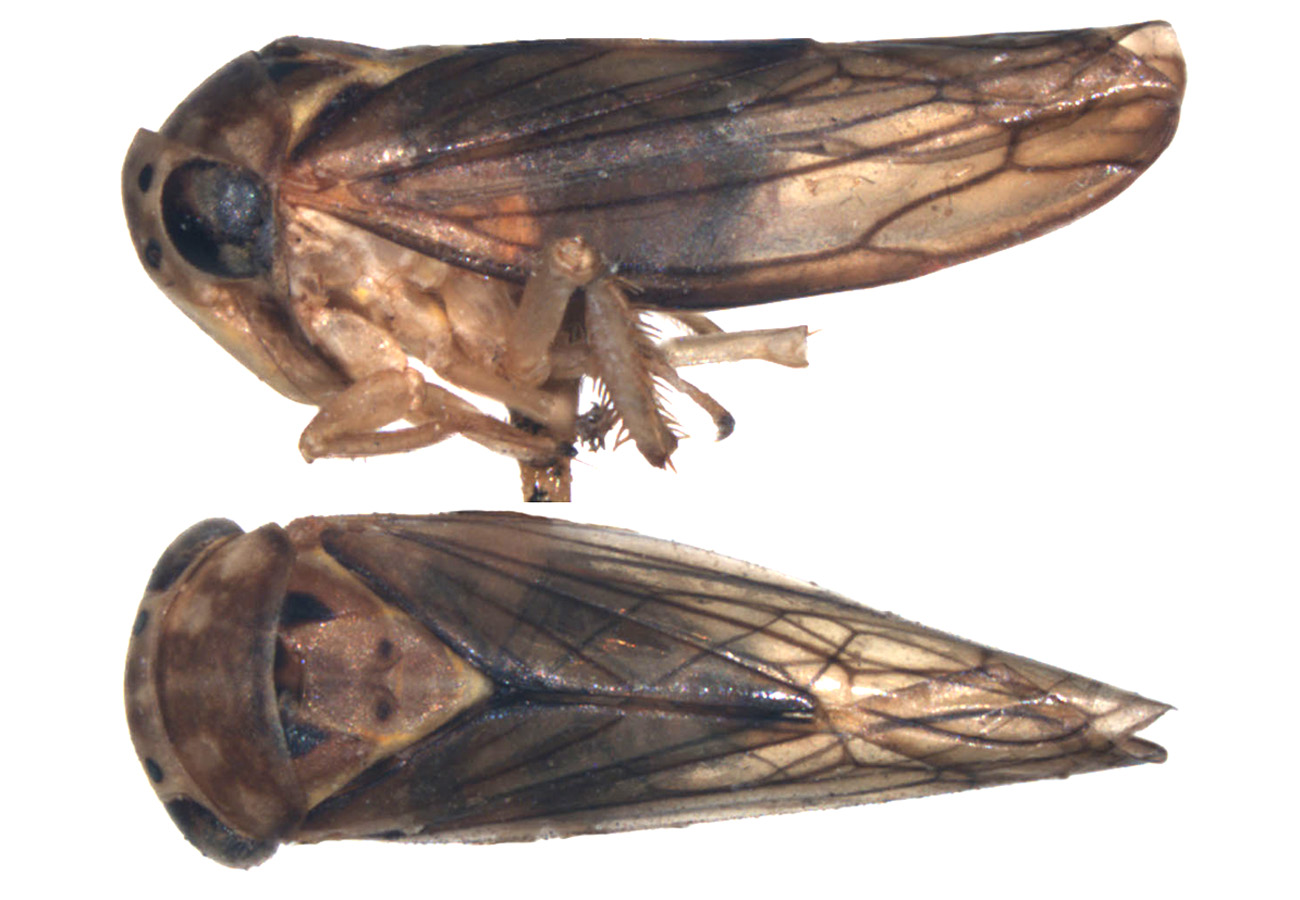Abstract
The new genus Medionops is proposed for a group of caponiid spiders found in South America and Panama. Nops simla Chickering and Nops cesari Dupérré are transferred to this new genus. Additionally, five new species are described: the type species Medionops blades n. sp. from Colombia; Medionops claudiae n. sp., Medionops murici n. sp. and Medionops ramirezi n. sp. from Brazil; and Medionops tabay n. sp. from Venezuela. All of these species belong to the subfamily Nopinae and have the three membranous translucent modifications found in some other nopine genera. However, in this new genus, the ventral translucent keel on the anterior metatarsi (crista herein) is very short, almost unnoticeable or even absent in some species. The translucent extension of the membrane between the anterior metatarsi and tarsi (gladius herein) retains the same shape, but it is absent in M. murici n. sp. Also, Medionops n. gen. species have an unpaired claw on all tarsi, which is elongate and dorsally reflexed, and is associated with a membranous globose translucent lobe (arolium herein); a structure present only in Nops MacLeay and Nopsides Chamberlin. Beside the characteristics mentioned above, members of this new genus differ from other nopine in the shape of labium and endites and in the conformation of male and female genitalia. The three membranous translucent modifications on legs of some nopine genera are discussed and their terminologies are standardized.
References
Chamberlin, R.V. (1924) The spider fauna of the shores and islands of the Gulf of California. Proceedings of the California Academy of Sciences, 12, 561–694.
Chickering, A. (1967) The genus Nops (Araneae, Caponiidae) in Panama and the West Indies. Breviora Museum Comparative Zoology, 272, 1–19.
Dunlop, J.A., Penney, D. & Jekel, D. (2016) A summary list of fossil spiders and their relatives. World Spider Catalog. Natural History Museum Bern. Version 16.5. Available from: http://wsc.nmbe.ch (accessed 22 April 2016)
Dupérré, N. (2014) Three new species of Caponiid spiders from Ecuador (Araneae, Caponiidae). Zootaxa, 3838 (4), 462–474.
http://dx.doi.org/10.11646/zootaxa.3838.4.5
Goel, S.C. & Schaefer, C.W. (1970) The structure of the pulvillus and its taxonomic value in the land Heteroptera (Hemiptera). Annals of The Entomological Society of America, 63 (1), 307–313.
https://doi.org/10.1093/aesa/63.1.307Hasselt, A.W.M. van (1887) Études sur le genre Nops. Tijdschrift voor Entomologie, 30, 67–86.
Jiménez, M.L., Platnick, N.I. & Dupérré, N. (2011) The haplogyne spider genus Nopsides (Araneae, Caponiidae), with notes on Amrishoonops. American Museum Novitates, 3708, 1–18.
Keyserling, E. (1877) Amerikanische Spinnenarten aus den Familien der Pholcoidae, Scytodoidae und Dysderoidae. Verhandlungen der Kaiserlich-Königlichen Zoologisch-Botanischen Gesellschaft in Wien, 27, 205–234.
MacLeay, W.S. (1839) On some new forms of Arachnida. Annals of Natural History, 2, 1–14.
Nentwig, W. (1993) Spiders of Panama: Biogeography, investigation, phenology, check list, key and bibliography of a tropical spider fauna. Sandhill Crane Press, Gainesville, Florida, vi + 274 pp.
Petrunkevitch, A. (1939) Catalogue of American spiders. Part one. Transactions of the Connecticut Academy of Arts and Sciences, 33, 133–338.
Platnick, N.I. (1995) A revision of the spider genus Orthonops (Araneae, Caponiidae). American Museum Novitates, 3150, 1–18.
Platnick, N.I. & Lise, A.A. (2007) On Nyetnops, a new genus of the spider subfamily Nopinae (Araneae, Caponiidae) from Brazil. American Museum Novitates, 3595, 1–9.
Prosen, A.F. (1949) Nops farhati sp. n. (Arachn., Caponiidae). Anales del Instituto de Medicina Regional Universidad Nacional de Tucuman, 2, 321–323.
Sánchez-Ruiz, A. (2004) Current taxonomic status of the family Caponiidae (Arachnida, Araneae) in Cuba with the description of two new species. Revista Ibérica de Aracnología, 9, 95–102.
Sánchez-Ruiz, A. (2010) Una especie nueva del género Nops MacLeay, 1839 (Araneae, Caponiidae) procedente de Islas Vírgenes de Estados Unidos de América, Antillas Menores. Novitates Caribaea, 3, 22–31.
Sánchez-Ruiz, A. & Brescovit, A.D. (2015) On the taxonomic placement of the Cuban spider Nops ariguanabo Alayón and the description of a new Mexican Tarsonops (Araneae, Caponiidae). Zootaxa, 3914 (2), 131–143.
http://dx.doi.org/10.11646/zootaxa.3914.2.3Sánchez-Ruiz, A., Brescovit, A.D. & Alayón, G. (2015) Four new caponiids species (Araneae, Caponiidae) from the West Indies and redescription of Nops blandus (Bryant). Zootaxa, 3972 (1), 43–64.
http://dx.doi.org/10.11646/zootaxa.3972.1.3Sánchez-Ruiz, A., Platnick, N.I. & Dupérré, N. (2010) A new genus of the spider family Caponiidae (Araneae, Haplogynae) from the West Indies. American Museum Novitates, 3705, 1–44.
http://www.bioone.org/doi/full/10.1206/3705.2Wolff, J., Seiter, M. & Gorb, S.N. (2015) Functional anatomy of the pretarsus in whip spiders (Arachnida, Amblypygi). Arthropod Structure & Development, 44, 524–540.
https://doi.org/10.1016/j.asd.2015.08.014World Spider Catalog (2016) World Spider Catalog. Version 17.0. Natural History Museum Bern. Available from: http://wsc.nmbe.ch (accessed 22 April 2016)

